.
8.03.2016
Isro to Launch Sixth Navigational Satellite on Thursday
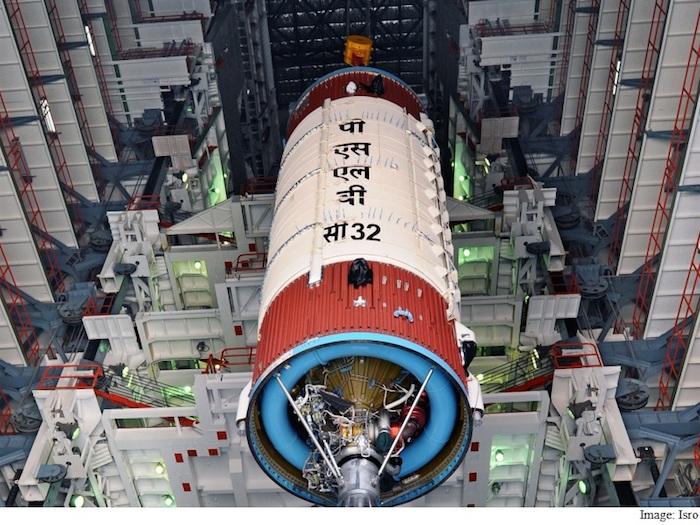
India is slated to put into orbit its sixth navigation satellite on Thursday evening, the Indian Space Research Organisation (Isro) announced in Chennai on Monday.
The 1,425-kg IRNSS-1F - Indian Regional Navigation Satellite System-1F - would hurtle into space on board its Polar Satellite Launch Vehicle (PSLV) on March 10, the Isro said.
The rocket will blast off around 4pm from the spaceport at Sriharikota in Andhra Pradesh, about 80km from Chennai.
This will be already the second rocket launch for India in 2016. The first one was on January 20 when a PSLV rocket put into orbit the IRNSS-1E satellite in text-book style.
Till date India has launched five regional navigational satellites (IRNSS-1A, 1B, 1C, ID and 1E) as part of a constellation of seven satellites to provide accurate position information service to users across the country and the region, extending up to an area of 1,500km.
Though the full system comprises nine satellites -- seven in orbit and two on the ground as stand-by - the navigation services could be made operational with four satellites, Isro officials had said earlier.
Each satellite costs about Rs. 150 crores and the PSLV-XL version rocket costs about Rs. 130 crores. The seven rockets would entail an outlay of about Rs. 910 crores.
The entire IRNSS constellation of seven satellites is planned to be completed in 2016 itself.
The first satellite IRNSS-1A was launched in July 2013, the second IRNSS-1B in April 2014, the third on October 2014, the fourth in March 2015, and the fifth in January this year.
The seventh satellite IRNSS-1G is expected to be launched in the second half of 2016.
Once the regional navigation system is in place, India need not be dependent on other platforms.
Quelle: NDTV
PSLV C-32 countdown to begin today
-
The countdown to the launch of India’s sixth dedicated navigation satellite from the Satish Dhawan Space Centre at Sriharikota in Andhra Pradesh will begin at 9.30 a.m. on Tuesday, an ISRO official said. The countdown will be for 54 and half hours.
The ISRO will put into orbit the 1,425-kg IRNSS-1F regional navigation satellite being developed by India on Thursday evening. India’s workhorse satellite launch vehicle, the Polar Satellite Launch Vehicle, the PSLV-C32, will carry the payload.
The ISRO had put into orbit the IRNSS-1E in January. The IRNSS-1F will be launched into a sub geosynchronous transfer orbit with a 284-km perigee (nearest point to Earth) and 20,657-km apogee (farthest point to Earth), according to the ISRO.
The satellite will carry two types of payloads – navigation payload and ranging payload. The navigation payload will transmit navigation service signals to users.
ISRO will put into orbit 1,425-kg IRNSS-1F regional navigation satellite
Quelle: The Hindu
---
Update: 9.03.2016
.
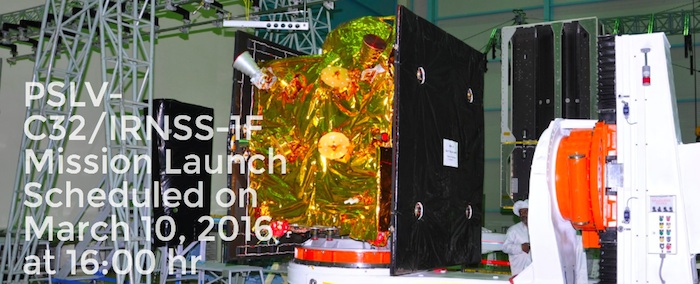
Polar Satellite Launch Vehicle, in its thirty fourth flight(PSLV-C32), will launch IRNSS-1F, the sixth satellite of the Indian Regional Navigational Satellite System(IRNSS). The launch willl take place from the Second Launch Pad (SLP) of Satish Dhawan Space Centre (SDSC) SHAR, Sriharikota on March 10, 2016 at 16:00 hrs. As in the previous five launches of IRNSS satellites. PSLV-C32 will use 'XL' version of PSLV. This is the twelth time 'XL' configuration is being flown, earllier eleventh being PSLV-C11/Chandrayan-1, PSLV-C17/GSAT-12, PSLV-C19/RISAT-1, PSLV-C22/IRNSS-1A, PSLV-C25/Mars Orbiter Spacecraft, PSLV-C24/IRNSS-1B, PSLV-C26/IRNSS-1C, PSLV-C27/IRNSS-1D, PSLV-C28/DMC3, PSLV-C30/ASTROSAT and PSLV-C31/IRNSS-1E misssions.
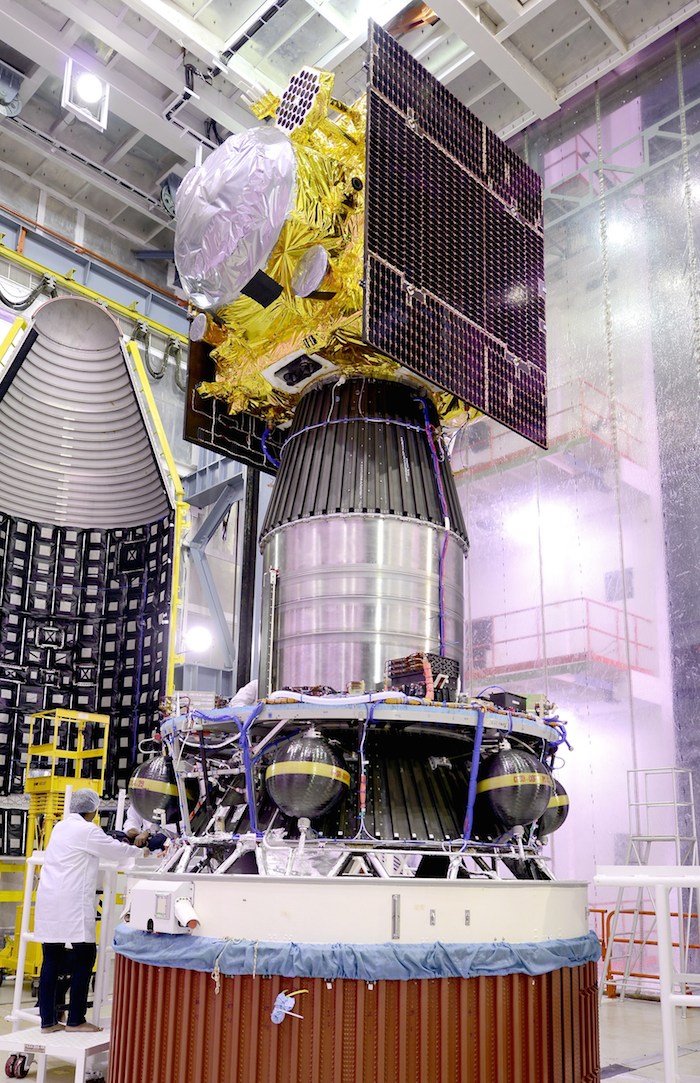
-
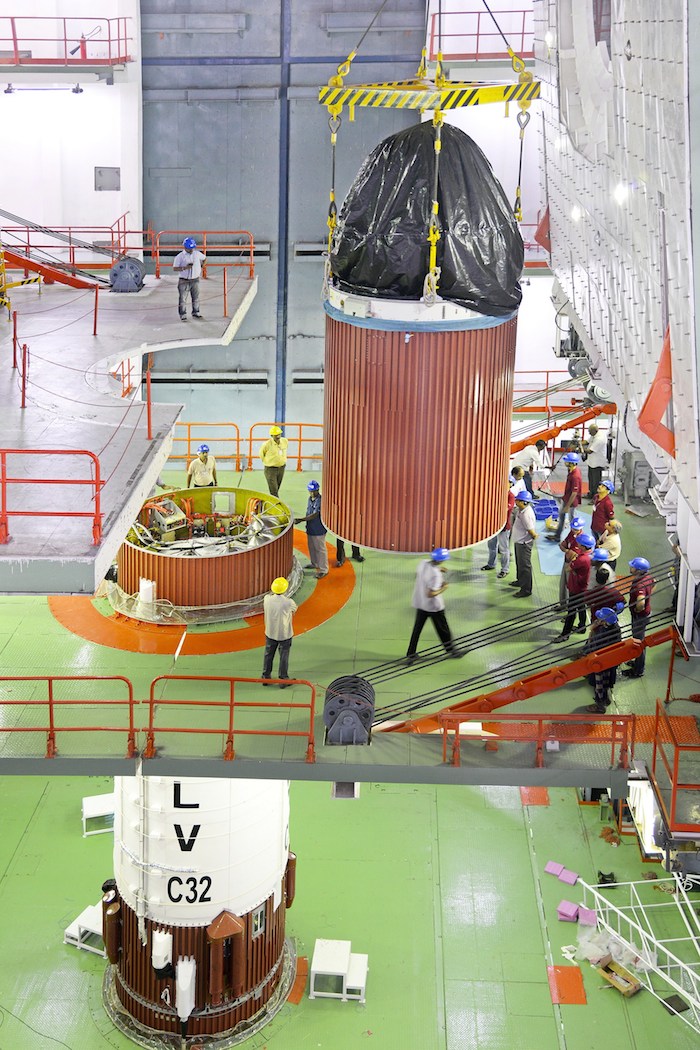
-
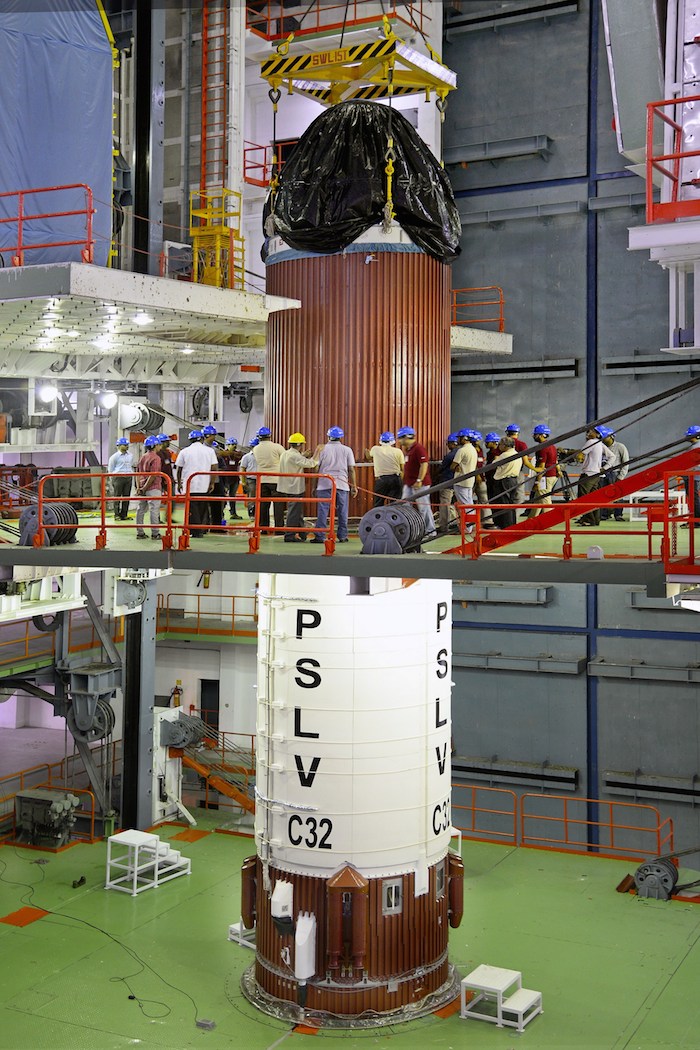
Quelle: ISRO
---
Update: 10.03.2016 / 15.00 MEZ
.
India launches sixth navigation satellite in copybook style
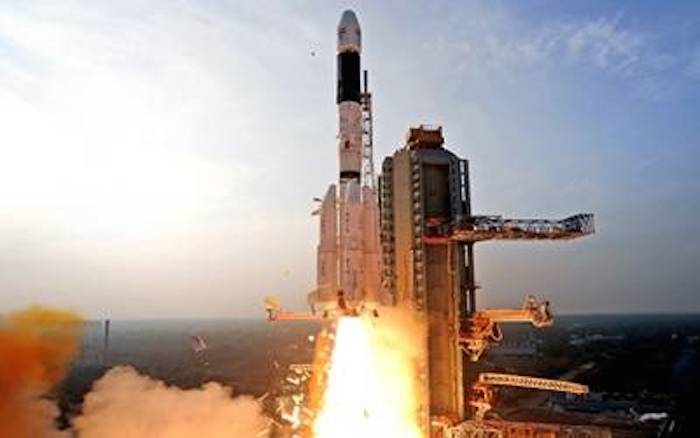
Sriharikota (Andhra Pradesh), March 10 (IANS) India on Thursday successfully put into orbit its sixth navigation satellite called IRNSS-1F with its own rocket in copybook style.
With this success, India has moved closer towards joining a select group of nations possessing its own satellite-based navigation system.
Named the Indian Regional Navigation Satellite System (IRNSS), it consists of a constellation of seven satellites, of which the sixth was put into orbit on Thursday.
Immediately after the 1,425-kg IRNSS-1F satellite was injected into space by the Polar Satellite Launch Vehicle (PSLV-C32) rocket, scientists at the mission control centre clapped their hands in joy.
"The sixth navigation satellite has been put into orbit successfully. The seventh navigation satellite is expected to be launched some time next month," ISRO chairman A.S. Kiran Kumar said.
The Indian Space Research Organisation (ISRO) will raise the satellite to its home slot over the next couple of days.
The satellite, with a design life span of 12 years, has two payloads for navigation and ranging.
The navigation payload of IRNSS-1F will transmit navigation service signals to the users. This payload will be operating in L5-band and S-band. A highly accurate rubidium atomic clock is part of the navigation payload of the satellite.
The ranging payload of IRNSS-1F consists of a C-band transponder (automatic receivers and transmitters of radio signals) which facilitates accurate determination of the range of the satellite.
IRNSS-1F also carries Corner Cube Retro Reflectors for laser ranging.
"The launch campaign for the seventh navigation satellite has begun at the first launch pad. The next navigation satellite launch will be a milestone for ISRO," said P. Kunhikrishnan, Director, Satish Dhawan Space Centre.
Till date, India has launched six regional navigational satellites (IRNSS-1A, 1B, 1C, ID, 1E and 1F) as part of a constellation of seven satellites to provide accurate position information service to users across the country and the region, extending up to an area of 1,500 km.
Though the full system comprises nine satellites -- seven in orbit and two on the ground as stand-by, the navigation services could be made operational with four satellites, ISRO officials had said earlier.
Each satellite costs about Rs.150 crore while the PSLV-XL version rocket costs about Rs.130 crore. The seven rockets would entail an outlay of about Rs.910 crore.
The entire IRNSS constellation of seven satellites is planned to be completed in 2016.
The first satellite, IRNSS-1A, was launched in July 2013, the second, IRNSS-1B, in April 2014, the third on October 2014, the fourth in March 2015 and the fifth in January this year.
While the sixth satellite went up on Thursday, the seventh - IRNSS-1G - is expected to be launched in the second half of 2016.
Once the regional navigation system is in place, India need not be dependent on other platforms.
According to ISRO, even with the operationalisation of five IRNSS satellites, the proof of concept of an independent regional navigation satellite system over India has been demonstrated for the targeted position accuracy of better than 20 metres over 24 hours of the day.
For the operationalisation of the sixth satellite, a better position accuracy will be provided, ISRO said.
While ISRO is silent on the navigation systems strategic application, it is clear that IRNSS will be used for defence purposes as well. Indian space agency officials said IRNSS system is unique as it consists of only seven satellites. Other systems in the world have over 20 satellites.
However, while other systems are global, Indian system is regional in nature.
At 4.01 p.m. the PSLV rocket standing 44.4 metres tall and weighing 320 tonnes tore into the evening sky with a fierce orange flames at its tail. The rocket took off with a delay of one minute to avoid collision with space debris.
Gathering speed every second, the rocked raced towards space amidst the cheers of the ISRO officials and the media team assembled at the rocket port here.
At the rocket mission control room, Indian space scientists at ISRO were glued to their computer screens watching the rocket escaping the earth's gravitational pull.
Just over 20 minutes into the flight, the PSLV rocket ejected its sole passenger IRNSS-1F at an altitude of 488.9 km.
Soon after the ejection into the orbit, the satellite's solar panels were deployed.
The satellite's control was taken over by the Mission Control Facility (MCF) at Hassan in Karnataka.
The MCF will manage the satellite's orbit raising operations and firing the on-board motors till it is placed in its slotted orbit.
The IRNSS is similar to the global positioning system (GPS) of the US (24 satellites), Glonass of Russia, and Galileo of Europe as well as China's Beidou.
While GPS and Glonass are fully functional global systems, the Chinese and the Japanese systems are offering regional coverage and Europe's Galileo is yet to be operational.
The IRNSS will provide two types of services -- standard positioning service and restricted service. The former is provided to all users and the latter is an encrypted service for authorised users.
Quelle: IANS-Live
...
Isro's PSLV-C32 places India's sixth navigation satellite IRNSS-1F in orbit

SRIHARIKOTA: The Indian Space Research Organisation (Isro) on Thursday accomplished the penultimate step in developing the country's own navigation system with the textbook launch of IRNSS-1F navigation satellite.
Polar Satellite Launch Vehicle (PSLV) C32 on carrying the 1,425kg IRNSS-1F (Indian Regional Navigation Satellite System) lifted off from the second launch pad at the Satish Dhawan Space Centre in Sriharikota at 4.01pm. Isro delayed the launch by one minute to avoid a possible collision with space debris.
Around 20 minutes after liftoff, PSLV C32 successfully placed IRNSS-1F in orbit. "Satellite has been placed in orbit safely," mission director Jayakumar B said.
IRNSS-1F is the sixth of seven satellites that would form a constellation of India's own navigation satellite network.
The satellite will take Isro to the threshold of putting in place an independent regional navigation satellite system like the American Global Positioning System (GPS).
.
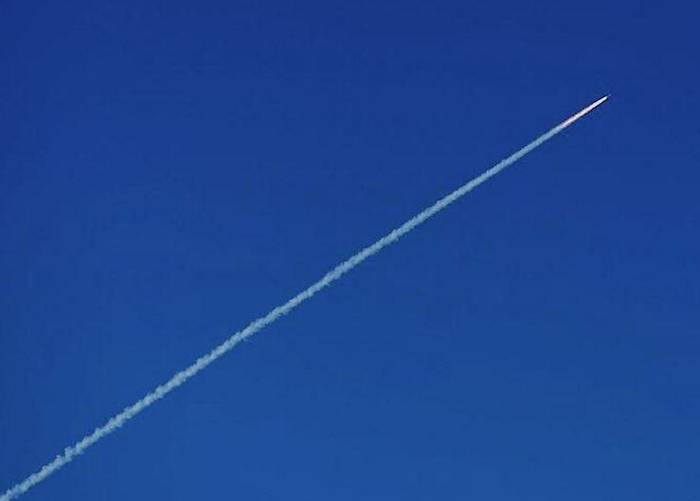
PSLV C32 seen from Chennai (TOI Photo by BA Raju)
The regional navigation system will provide accurate positional information to users in India and up to 1,500km from the boundary. IRNSS will provide two types of services -- standard positioning service for all users and restricted service, which is an encrypted service only for authorised users.
.
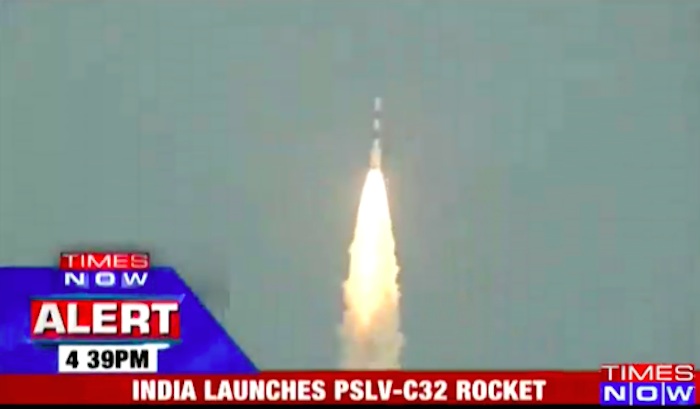

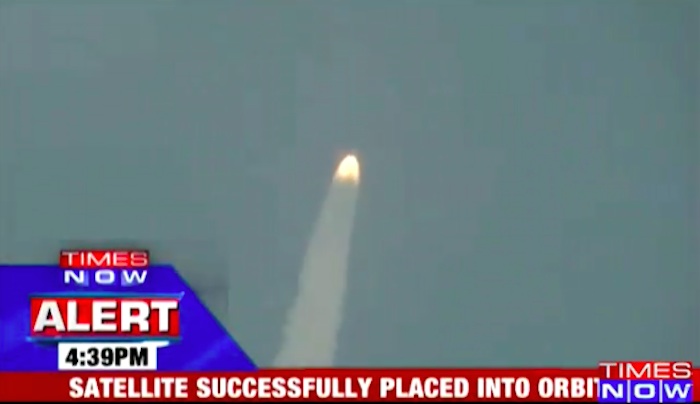

.
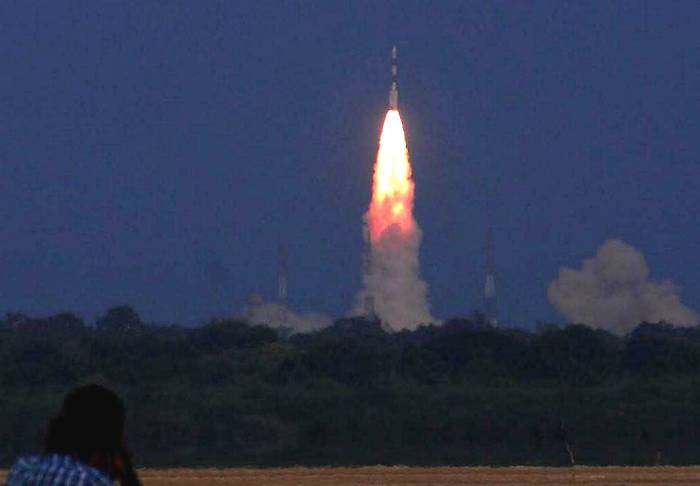
Quelle: The Times of India
---

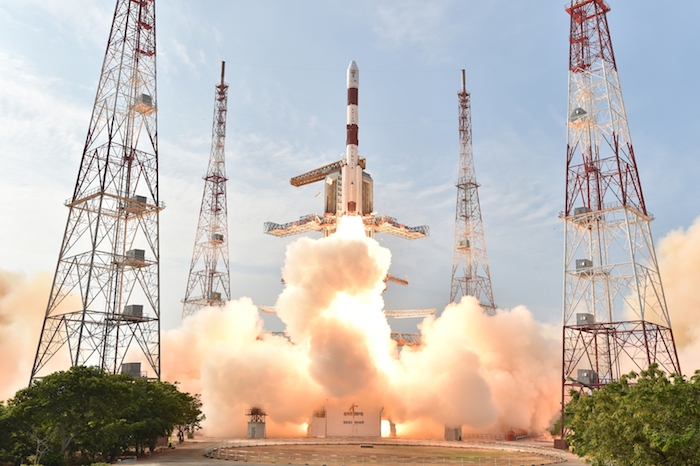
Quelle: ISRO
4060 Views
